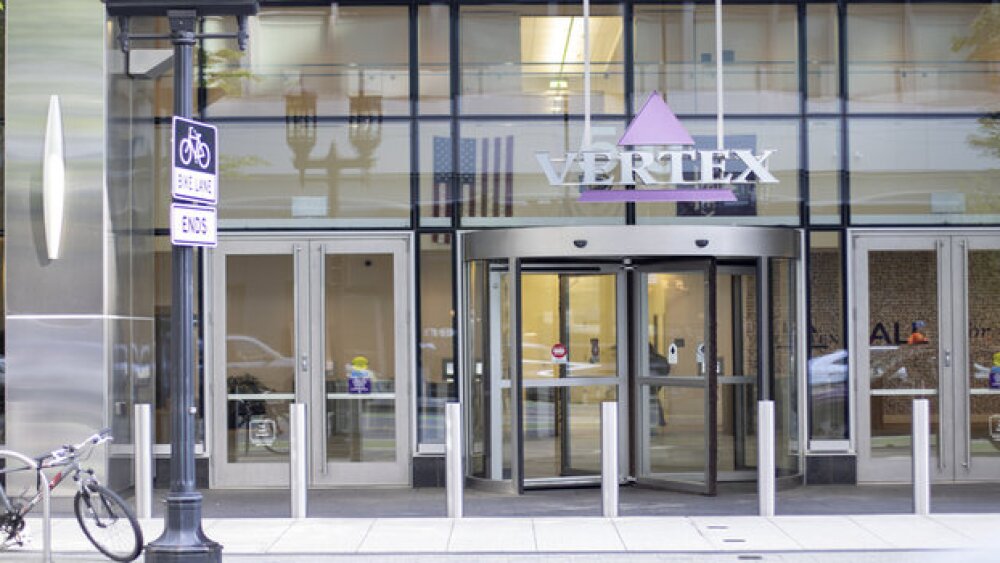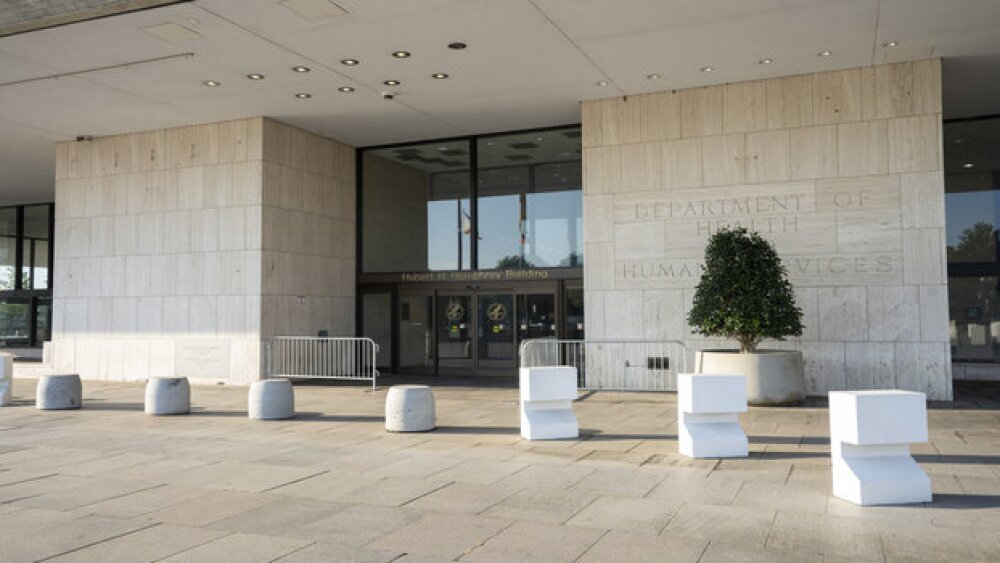The company’s three-drug combination met all primary and key secondary endpoints in two randomized controlled trials in cystic fibrosis patients, paving the way for an application to regulators.
Pictured: Vertex’s office in Boston, Massachusetts/iStock, hapabapa
Vertex Pharmaceuticals on Monday posted positive data from the pivotal Phase III development program of its investigational cystic fibrosis treatment, dubbed vanza triple, setting the stage for regulatory filings later this year.
Vertex’s Phase III program is comprised of three late-stage trials: SKYLINE 102 and SKYLINE 103, which tested vanza triple in cystic fibrosis (CF) patients aged 12 years and above, and RIDGELINE 105, which focused on patients aged six to 11 years. Both SKYLINE studies compared vanza triple to Vertex’s FDA-approved CF therapy Trikafta (elexacaftor/tezacaftor/ivacaftor and ivacaftor), while RIDGELINE 105 is a single-arm study.
Results from SKYLINE 102 and SKYLINE 103 showed that vanza triple—consisting of the three drugs vanzacaftor, tezacaftor and deutivacaftor—was non-inferior to Trikafta at 24 weeks in terms of forced expiratory volume in one second, which was the primary efficacy endpoint of both studies.
In addition, vanza triple outperformed Trikafta at reducing sweat chloride levels, a key secondary endpoint of both SKYLINE trials. These findings were durable up to 52 weeks of observation, according to Vertex’s announcement.
Data from RIDGELINE 105 validated the SKYLINE studies, showing that vanza triple treatment cut mean sweat chloride levels by 8.6 mmol/L versus Trikafta at week 24. In addition, 95% of treated children achieved sweat chloride concentrations below 60 mmol/L, which is the diagnostic threshold for CF, while the majority of kids reached normal concentrations of 30 mmol/L.
In terms of safety, all three studies recorded mostly mild to moderate adverse events, which were consistent with the manifestations of CF. Serious adverse events were uncommon and were generally balanced between the vanza triple and Trikafta arms. Vanza triple’s safety profile was similar between patients aged six to 11 years and those 12 years and above.
Vertex CMO Carmen Bozic said in a statement that the company is “very pleased” with vanza triple’s performance, which raises “the very high bar set by Trikafta” even further. The biotech is looking to submit a New Drug Application by mid-2024, for which it will use its priority review voucher ensuring a six-month review period rather than the standard 10-month wait.
Vertex is also planning to file a Marketing Authorization Application with the European Medicines Agency.
Monday’s readout continues the biotech’s winning streak. Last week, its non-opioid pain medicine VX-548 notched triple Phase III victories, significantly easing pain in patients undergoing a tummy tuck and a bunionectomy, along with other non-surgical types of pain.
Vertex also recently won two FDA approvals for its gene-edited cell therapy Casgevy (exagamglogene autotemcel) with partner CRISPR Therapeutics—one in December 2023 for sickle cell disease, and another last month for transfusion-dependent beta thalassemia.
Tristan Manalac is an independent science writer based in Metro Manila, Philippines. Reach out to him on LinkedIn or email him at tristan@tristanmanalac.com or tristan.manalac@biospace.com.






